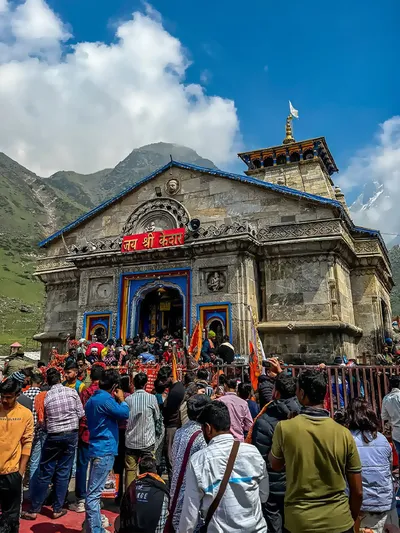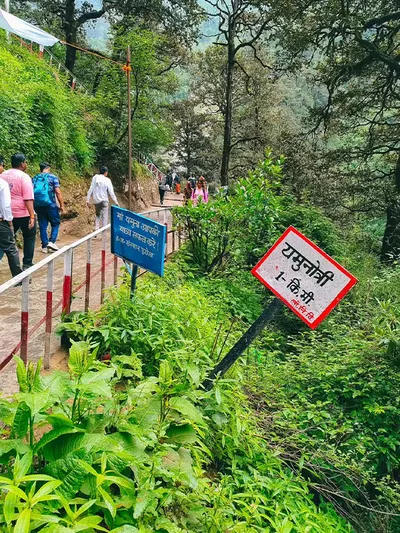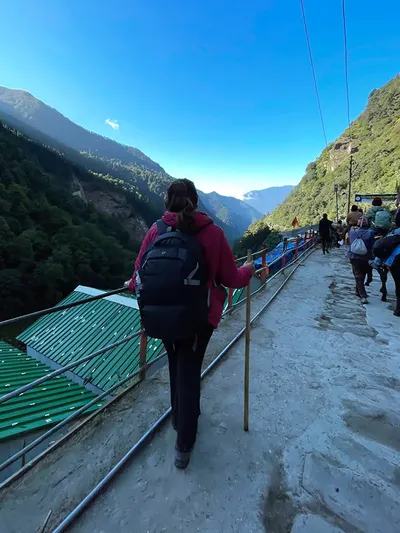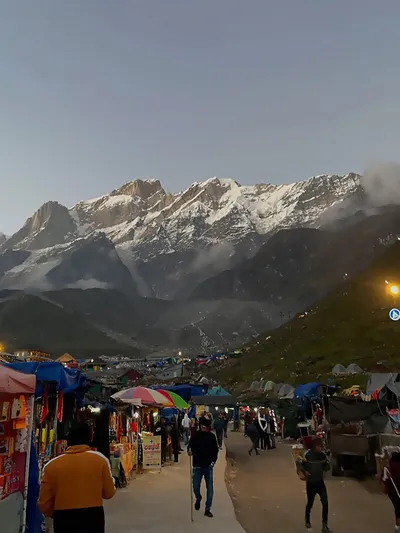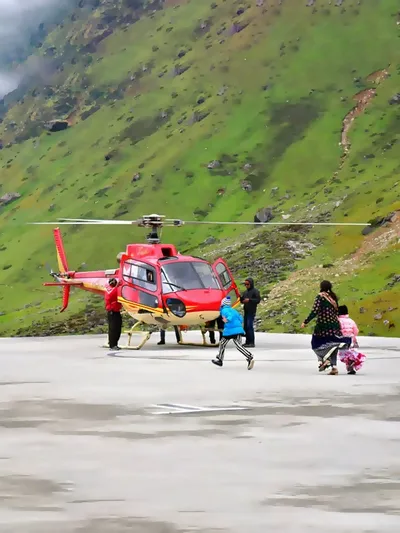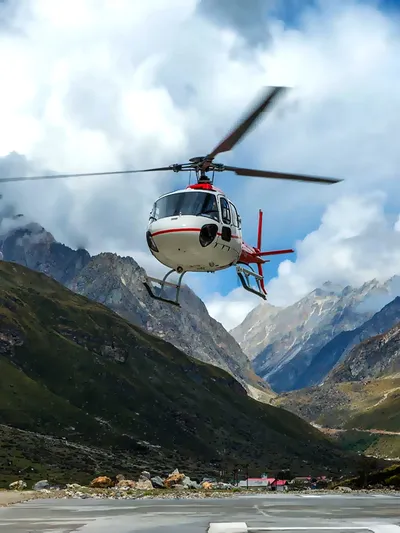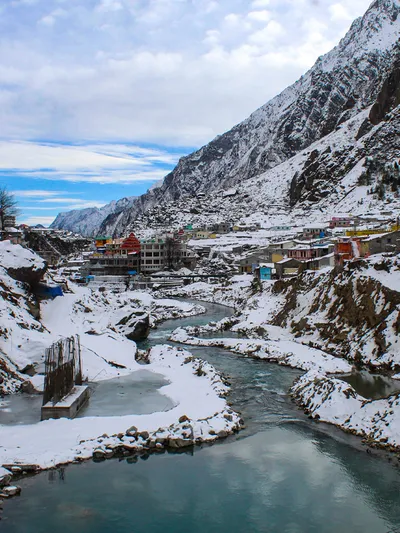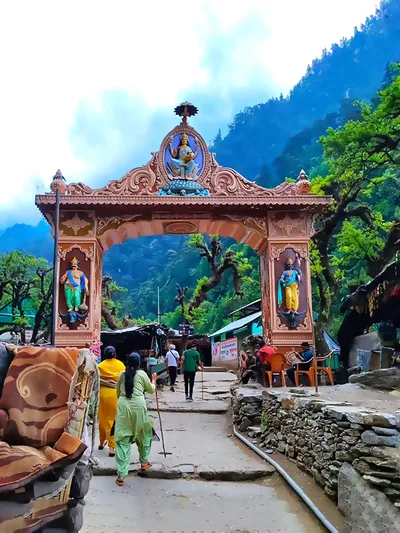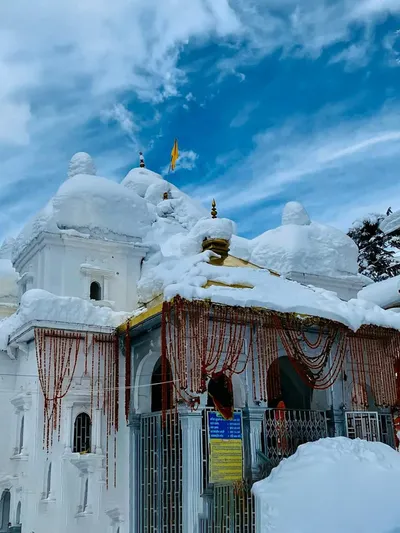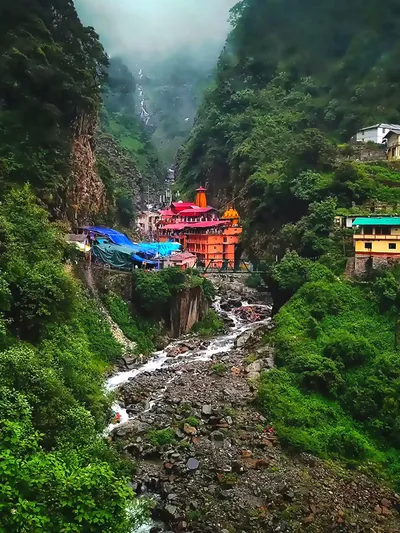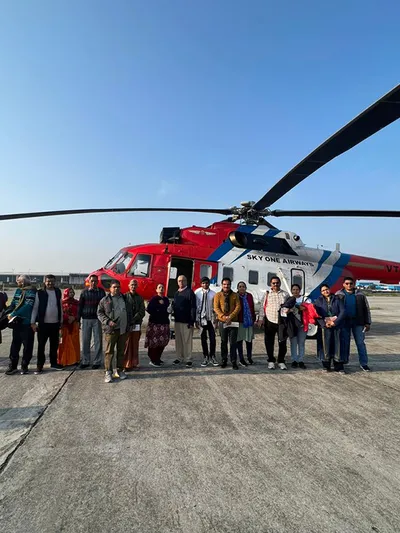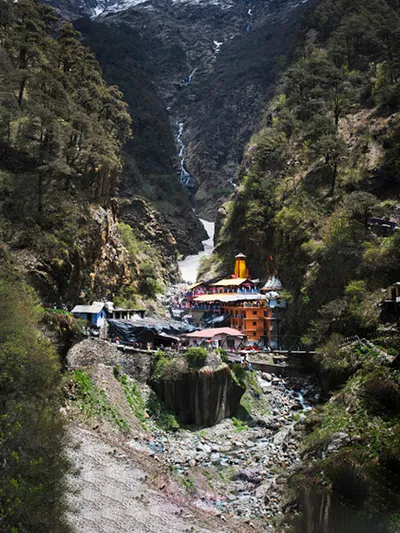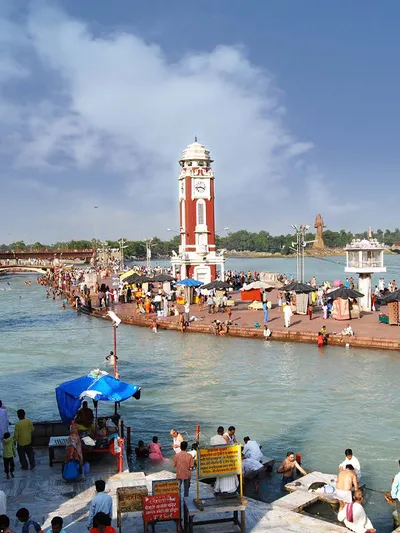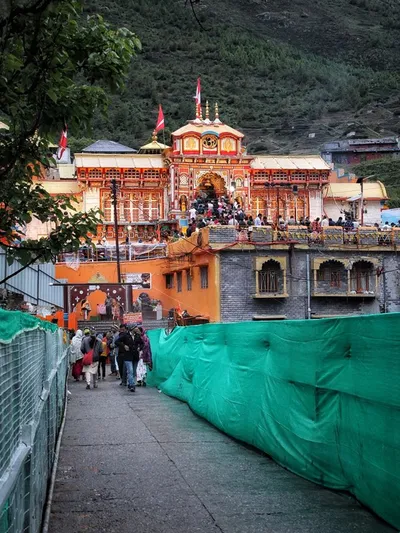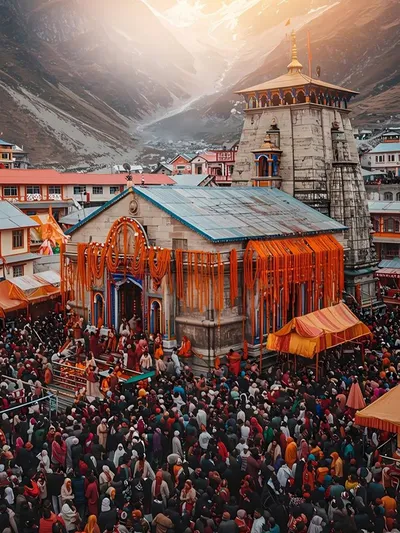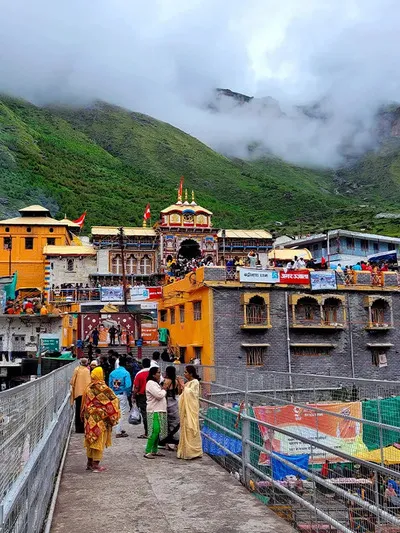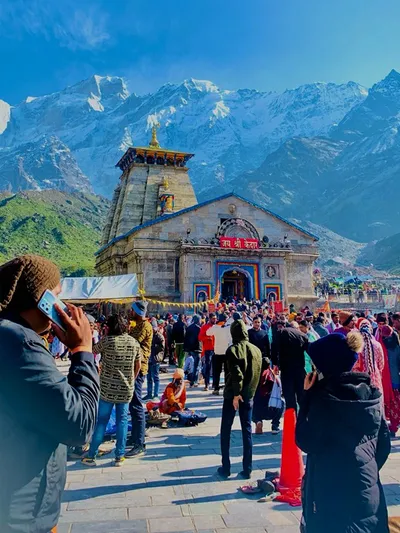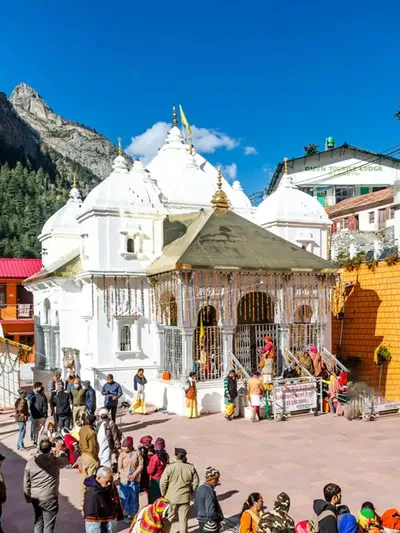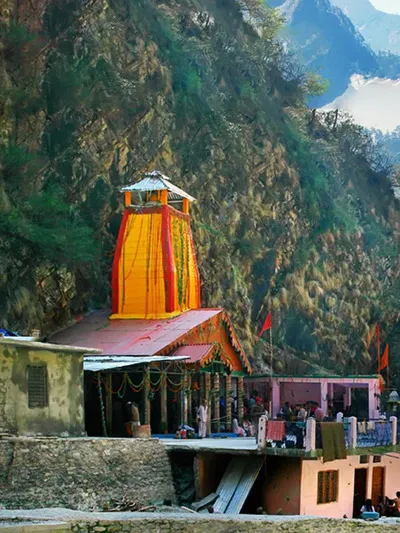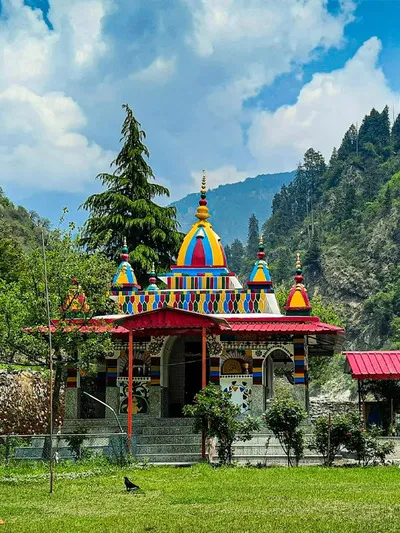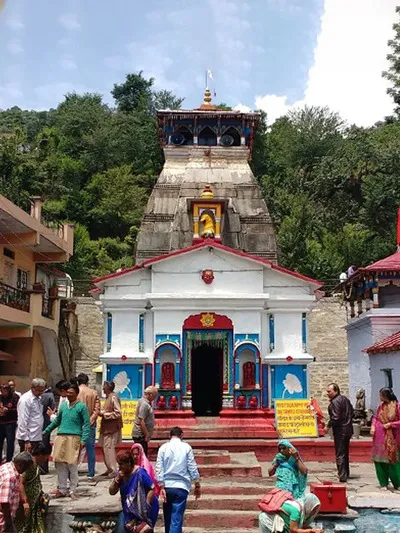The Highest Shiva Temple in the World

Tungnath Temple is in the Garhwal Himalaya Mountains of Uttarakhand. This holy temple's name means “lord of the peaks. It stands on a hill between the sacred Alaknanda and Mandakini rivers. Pilgrims from all over the world visit this holy place.
Tungnath temple is an important part of the Panch Kedar. This temple is around 5,000 years old. Here, people worship the hands of Lord Shiva. It is the second most important shrine after Kedarnath Dham. With its natural beauty and strong spiritual vibe, this shrine is a great place to visit.
The Story Behind the Tungnath Temple
- Tungnath Temple is not just an old temple it’s a place filled with deep stories and spiritual vibes. People believe that Lord Rama meditated at Chandrashila, a peak close to the temple. Even Ravana, a great devotee of Lord Shiva, meditated in these mountains.
- After the war the Pandavas felt guilty for killing their cousins and wanted to ask Lord Shiva for forgiveness. But Lord Shiva didn’t want to meet them directly, so he turned into a bull and disappeared. It is believed that parts of his body appeared in five different places. His arms were found at Tungnath, which makes this temple one of the holy Panch Kedar shrines.
- Because Tungnath was so high in the mountains and hard to reach, people didn’t know about it for many years. Later, Adi Shankaracharya found the temple during his travels.
Architecture
Tungnath Temple is famous, so most visitors think it is big. But in reality, it is a small stone temple. According to mythology, Arjuna built this temple. The Shiva lingam inside is believed to be the arms of Lord Shiva and is kept in the temple’s central room, called the Garbha Griha. The temple follows the traditional North Indian design.
Tungnath Trek Experience
- It’s an easy trek to the Lord Shiva temple, just 4 km away from Chopta.
- In winter, heavy snow covers the whole area, which makes it difficult to get to the temple.
- As you walk, you’ll pass through green meadows, rhododendron trees, and rocky paths, all with the stunning Himalayas around you.
- If the sky is clear, you’ll see snow-covered mountains all around the valley. It looks really beautiful.
Important Things to Know Before Visiting Tungnath Temple
- A priest from Maku village performs the daily rituals at the temple.
- Due to heavy rain and snow, the temple is only open for visitors from May to November.
- You need to reach Chopta first, and from there, it's a 4 km trek to the temple. The walk takes about 3 to 4 hours. The Aarti at the temple is very peaceful and touches the heart.
Things to Do in Tungnath
Trek to Chandrashila
Chandrashila is a famous trekking destination near the temple, just 5 km away. There are no proper roads, so you follow the marked path. This peak is important in Hinduism because it is believed that Lord Rama has prayed here to ask for forgiveness after killing Ravana.
Stargazing
If you enjoy looking at the stars, stargazing in Chopta is one of the best things you can do. The night sky here is clear and bright. You can see thousands of stars, some planets, and even shooting stars sometimes.
Kanchula Korak Musk Deer Sanctuary
This musk deer sanctuary covers around 5 sq. Km, it is a perfect place for those who love nature and adventure. Here, you can find musk deer and many other animals that live in the Himalayan Mountains. Apart from this, there are many kinds of plants here, and locals say that some of these plants have not been studied or named by scientists yet.
Birdwatching
It is also a great place for Birdwatching. You can see bright birds like pheasants, woodpeckers, and some rare birds. Bring your binoculars to watch birds closely and enjoy the peaceful sounds of nature around you.
Places to Visit in Tungnath
Madhyamaheshwar
Located 3,497 meters above sea level, this temple is dedicated to Lord Shiva. The great Lord Shiva is worshipped here in a special form called a lingam. From this temple, you can enjoy stunning views of the Himalayan valleys all around. Many visitors come here, not only for religious reasons but also to enjoy nature walks and trekking.
Gaurikund
This place is a well-known Hindu pilgrimage spot and the starting point for the trek to the Kedarnath temple. According to Hindu mythology, Goddess Parvati did deep meditation here to win Lord Shiva’s heart. Gaurikund also has a hot spring that people believe can heal both mind and body.
Kalimath
This place is 1,800 meters above sea level, and it is one of the 108 important Shakti Peethas in India. Kalimath is located near Ukhimath, the winter home of lord Kedar’s idol. This temple is dedicated to Goddess Kali, and lots of people come here to pray, especially during the special festival of Navratri.
Gopeshwar
Gopeshwar is a small, beautiful village near Chamoli district in the Himalayas. People say that Gopeshwar is named after Lord Krishna. It is believed that Lord Shiva was impressed by Lord Krishna’s flute. He even took the form of a Gopi (cowherd girl) to join Krishna’s Raas Leela. Since then, people started worshipping him here as Gopeshwar Mahadev.
Best Time to Visit
The best time to visit Tungnath Temple is between May to June and September to November, when the weather is good for trekking and enjoying the views.
- Winter (November to March) - Tungnath is covered in deep snow during the winter months, especially from December to February. Because of this, the temple is hard to reach. The weather stays between 12°C and 15°C, but it can sometimes go below 0°C.
- Summer (April to June)- Summer is the best time to visit this holy place. The temperature stays between 17 to 27°C, and many pilgrims and devotees come here during this season. As the snow melts, the paths become open, and the area turns green.
- Monsoon (July to early September) - This season brings heavy rain, which makes the paths slippery and dangerous. Landslides can happen too, so trekking isn’t very safe at this time.
How to Reach Tungnath Temple
- By Air - Closest airport is located in Dehradun, at Jolly Grant, which is 21 km from Rishikesh. After arriving in Rishikesh, you will need to take a road journey to reach Tungnath.
- By Rail- The closest railway station to Tungnath is Rishikesh Railway Station, which is well connected to all major cities in India. Once you arrive in Rishikesh, your journey will continue by road. Chopta is 164 km from Rishikesh.
- By Road- You can reach Tungnath by traveling on the Kund-Gopeshwar road to Chopta, which is about 212 km from Rishikesh through Chamoli and Gopeshwar. Buses and taxis are easy to find on this route. From Chopta, it’s a short 3 km trek to the temple.
Route Map
Delhi → Haridwar → Rishikesh → Devprayag → Srinagar → Rudraprayag → Augustmuni → Syalsaur → Kund → Ukhimath → Duggalbitta → Baniyakund → Chopta → Tungnath → Chandrashila.
Festivals at Tungnath
Festivals like Basant Panchami, Dussehra, and Diwali are celebrated at Tungnath Temple with great joy and excitement. At Tungnath Temple, the puja is done by a local Brahmin from Maku village. This is different from other Kedar temples, where priests usually come from South India, a tradition started by Adi Shankaracharya.
Opening and Closing Dates
Tungnath Temple will open for pilgrims on 2nd May 2026 and remain open until 4th November 2026.
Accommodation Facilities
If you wish to stay the night at Tungnath, you have options according to your budget. There are three verified hotels in Tungnath, and budget-friendly rooms that are clean and affordable. In addition, you can opt for staying in Chopta, which has several accommodation options, though do not expect luxury resorts. Camping is also an option, as campsites are available on the way to Ukhimath.
Conclusion
Tungnath Temple is a peaceful and spiritual place in the Garhwal Himalayas. Known as the world’s highest Shiva temple, it is part of the sacred Panch Kedar Yatra. People come here not just for religious reasons but also for trekking, enjoying nature, and exploring nearby places like Chandrashila, Gaurikund, and Kalimath. The temple is open from 2nd May to 4th November 2026, as winters bring heavy snow. The short trek from Chopta is filled with natural beauty, forests, and mountain views. Apart from the temple, you can enjoy looking at the stars, birdwatching, or visiting the musk deer sanctuary. Whether you're a devotee or a nature lover, Tungnath is a great place for a peaceful and meaningful visit. Just choose the best time to visit, and you’ll have an amazing trip in the Himalayas.
